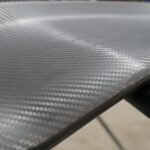A chiropractor is a health care practitioner who specialises in diagnosing and treating neuromuscular problems, with an emphasis on spinal manipulation and/or manual adjustment.
Most chiropractors aim to alleviate pain and enhance patients’ functioning while also educating them on how to take responsibility for their health through exercise, ergonomics, and other back pain treatments.

Chiropractic Examinations
A chiropractic examination is highly similar to normal examination processes used by all health care practitioners in many ways. Having said that, how chiropractors assess the anatomy and function of the spine before determining particular chiropractic treatments distinguishes chiropractic therapy from other professions.
A consultation, patient history, and physical examination are often included in an initial chiropractic assessment for back pain. In addition, X-rays and laboratory analysis may be used.
Consultation
The patient visits with the chiropractor and describes their lower back problem in detail, such as:
- Duration and frequency
- Detailed descriptions of symptoms (e.g. burning, throbbing)
- Painful areas
- What alleviates the pain? (e.g. sitting, stretching)
- What aggravates the pain? (e.g. standing, lifting).
Patient History
Expect the chiropractor to ask questions and learn more about your history as a patient, which includes:
- Ancestral history
- Dietary practises
- Previous treatment history (chiropractic, osteopathic, medical and other)
- Occupational background
- Psychosocial background
- Other areas to investigate, frequently depending on replies to the preceding questions.
This way, the chiropractor can determine the area(s) of the complaint and the nature of the pain.
Physical Examination
A chiropractor may use a variety of ways to evaluate which spinal segments require chiropractic therapy, including but not limited to static and motion palpation techniques for diagnosing hypomobile (restricted in movement) or fixated spinal segments. In addition, a chiropractor may utilise further diagnostic procedures, such as:
- An X-ray to discover subluxations based on the findings of the aforementioned examination (the altered position of the vertebra).
- A device that measures the skin’s temperature in the paraspinal region to identify spinal locations with large temperature variations that necessitate manipulation.
Chiropractic Adjustments
A chiropractic adjustment is a manipulation performed by a chiropractor on vertebrae that have aberrant movement patterns or fail to function appropriately.
This chiropractic therapy aims to diminish the subluxation while enhancing the range of motion, lowering nerve irritation, and improving function.
A chiropractic adjustment usually consists of:
- A high velocity, brief lever arm pushes to a vertebra.
- An audible gas discharge (joint cavitation) is induced by releasing oxygen, nitrogen, and carbon dioxide, which can relieve joint pressure.
- It is mostly a relaxing experience, although some discomfort has been observed (typically for a brief time) if the patient tenses up or the surrounding muscles are in spasm during chiropractic therapy.
It should be noted that joint cavitation or cracking does not always occur, generally as a result of substantial muscle splinting or the patient failing to relax sufficiently during the chiropractic manipulation. Before making the chiropractic adjustment, it is sometimes beneficial for the chiropractor to provide ice, have the patient relax, or do electrical stimulation and massage.











Leave a Reply
You must be logged in to post a comment.